Richmond
OS grid reference:- NZ 170 009
The market town of Richmond derives its name from Richemont in France, now in the Seine-Maritime département of Upper Normandy and was founded in 1071 by the Breton lord, Alan Rufus, son of Odo, Count of Penthièvre, on lands granted to him by William the Conqueror.
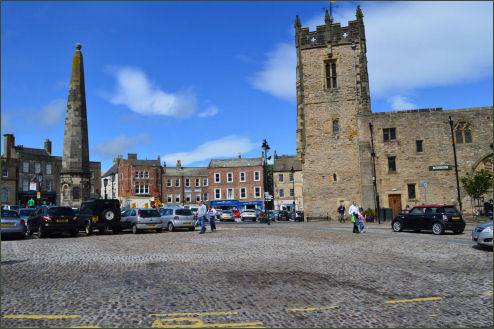
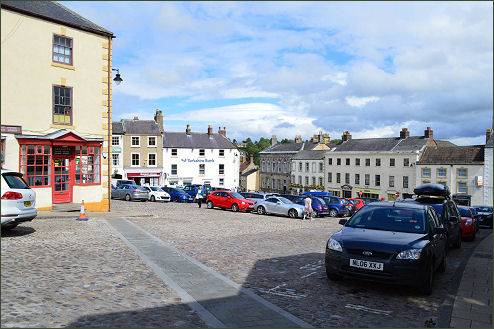
Historically Richmond formed part of the lands of the earldom of Richmond, which was held by the Dukes of Brittany until the fourteenth century. On the death of John V, Duke of Brittany in 1399 King Henry IV took possession of the lands. In 1453, the earldom was conferred on Edmund Tudor, the illegitimate half-brother of King Henry VI. It was became merged with the crown's estates when Edmund's son, Henry Tudor, became king Henry VII after the Battle of Bosworth in 1485.
Richmond's characterful old cobbled market place was originally the outer bailey of the castle and is one of the largest in England. It is backed by fine Georgian buildings, hidden alleys and gardens. Richmond Falls, located near the town centre, are a series of waterfalls on the River Swale and are particularly good after heavy rain.
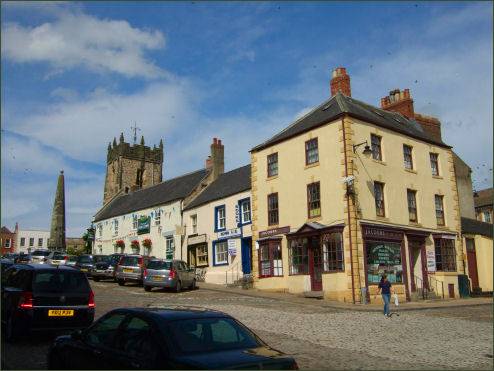
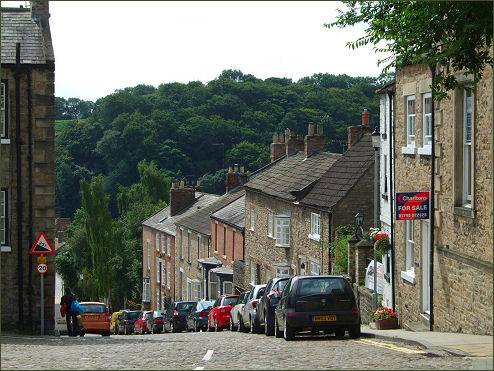
Friar's Wynd leads to one of the two remaining medieval gateways and on to the Friary Gardens where the Franciscan Friary bell tower (pictured right) still stands. It was built by the Greyfriars of Richmond and dates to the fifteenth century. Swale House on Frenchgate, was built around 1750 and was home to the headmaster and students of the nearby grammar school, before being used as a hospital for wounded officers in the First World War. For many years, it was the headquarters of Richmondshire District Council.
The Georgian Theatre Royal founded in 1788 by the actor, Samuel Butler, is located just off the market place. A decline in the fortunes of theatre led to its closure in 1848. In 1963 the theatre was restored and reopened, with a theatre museum added in 1979. More recently, the theatre has become the Georgian Theatre Royal and was extended in 2003 with the addition of a new block providing services and access next to the original auditorium. It is one of Britain's oldest extant theatres. The Green Howards Regimental Museum is housed in the old Trinity Church to the right in Market Square contains a wealth of rare regimental memorabilia spanning the past three centuries, the town is also home to the Richmondshire Museum.
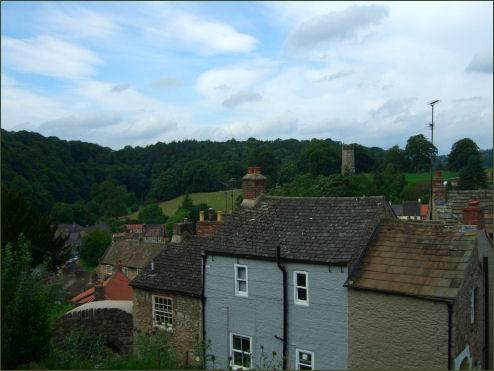
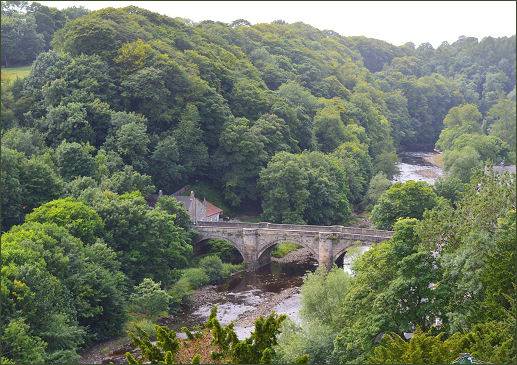
The ruins of Easby Abbey or the Abbey of St Agatha as it is sometimes known, lies in a picturesque setting on the banks of the River Swale on the outskirts of the town. The abbey was founded in 1152 by Roald, Constable of Richmond Castle. Belonging to Premonstratensian order, one of the smallest religious orders in England.
In the eighteenth century, soldiers discovered a small opening to a tunnel beneath the Castle Keep. It was just large enough for the regimental Drummer Boy to be lowered into. He was told to follow the tunnel, beating his drum as he went. The sound could be clearly heard by the soldiers above, who followed his steps across the Market Place and off in the direction of Easby Abbey. Inexplicably the drumming stopped about half a mile before the Abbey. He was never seen or heard from again. Today a Stone marks the spot where the Drummer Boy disappeared.
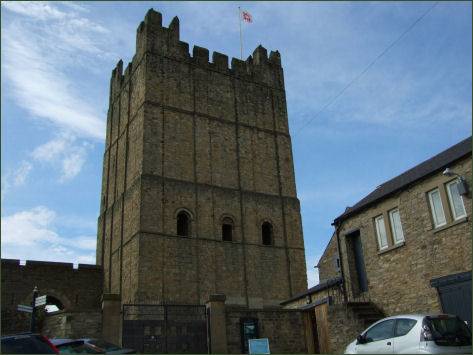
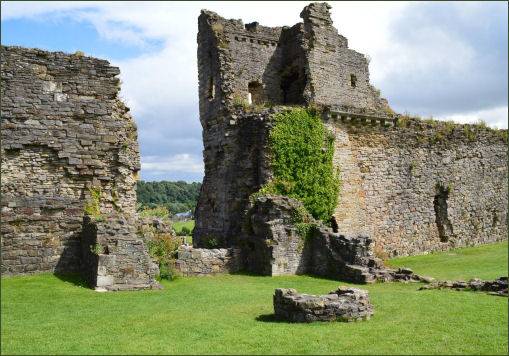
St Nicholas was founded as a Benedictine hospital around 1171 by one of the earls of Richmond and is the oldest continuously inhabited house in Richmond. Covering around 7 acres, St Nicholas Gardens were designed and planted by the Hon Robert 'Bobbie' James (1873-1960) at the start of the twentieth century as a series of garden rooms divided by hedges and walls of local stone, reminiscent of and contemporary with Hidcote gardens.
Images courtesy of Paul Johnson
Richmond Castle
 Richmond Castle occupies a commanding defensive position above the River Swale. Originally referred to as Riche Mount, meaning 'the strong hill', the castle was founded in 1071 following the Norman Conquest.
Richmond Castle occupies a commanding defensive position above the River Swale. Originally referred to as Riche Mount, meaning 'the strong hill', the castle was founded in 1071 following the Norman Conquest.
The keep was constructed at the latter part of the twelfth century by Duke Conan IV of Brittany, Earl of Richmond. The Earldom of Richmond was confiscated in 1158 by King Henry II, and It was probably he who completed the keep and strengthened the castle by adding towers and a barbican. King Edward I made improvements to the keep interior.
The Castle had fallen out of use as a fortress by the end of the fourteenth century and was partly in ruins by the sixteenth. Repairs were carried out to the keep in the early nineteenth century.
William the Lion king of Scots was taken prisoner by Ranulf de Glanville at Alnwick in 1174, when he was unhorsed whilst charging the English. The Scottish king was imprisoned in Richmond Castle. His successor David II was also a prisoner in the castle after his defeat at Neville's Cross in 1346. During the Civil War King Charles I was lodged at the castle during his journey south in 1647 after he had surrendered to the Scots.
